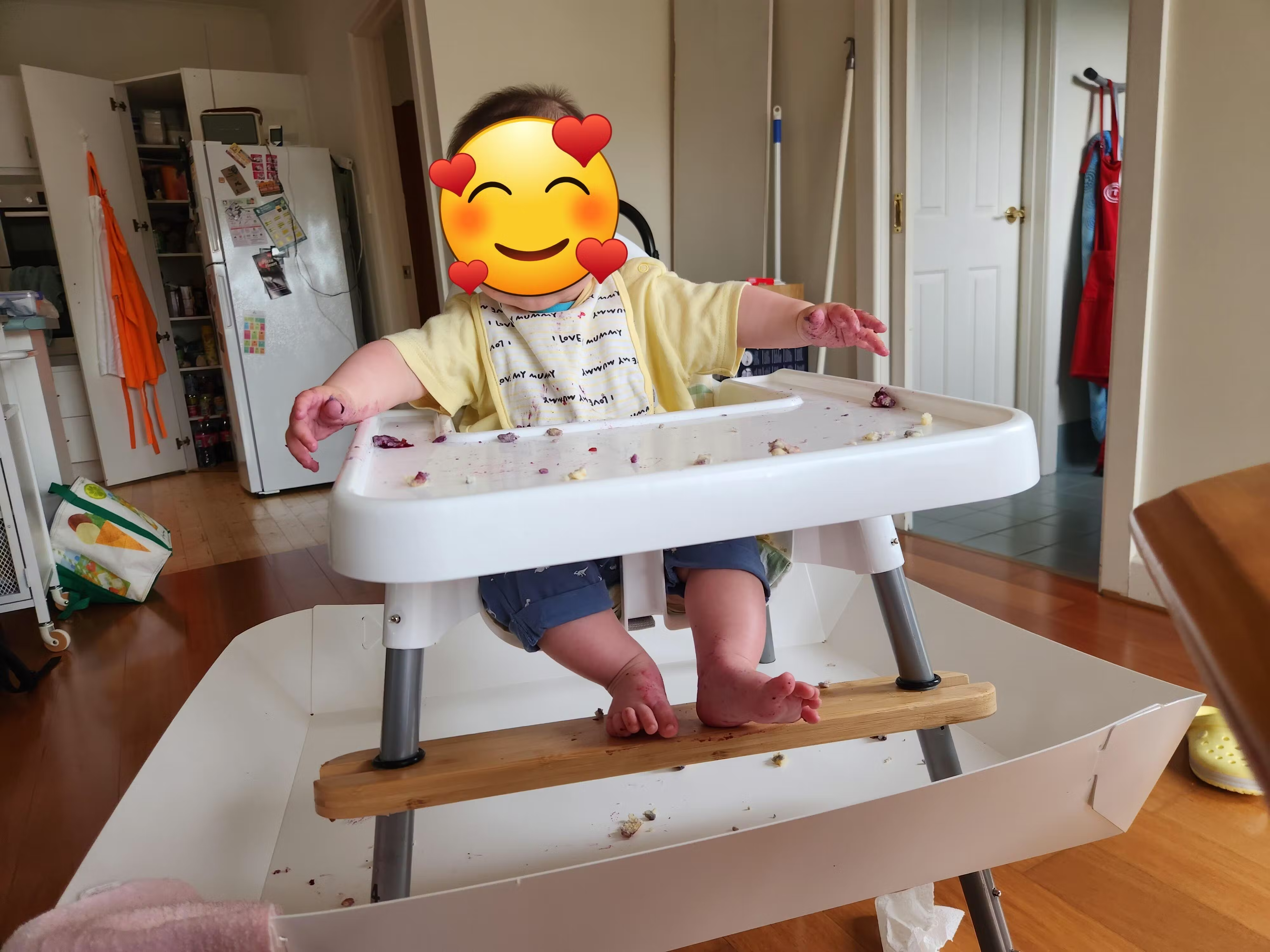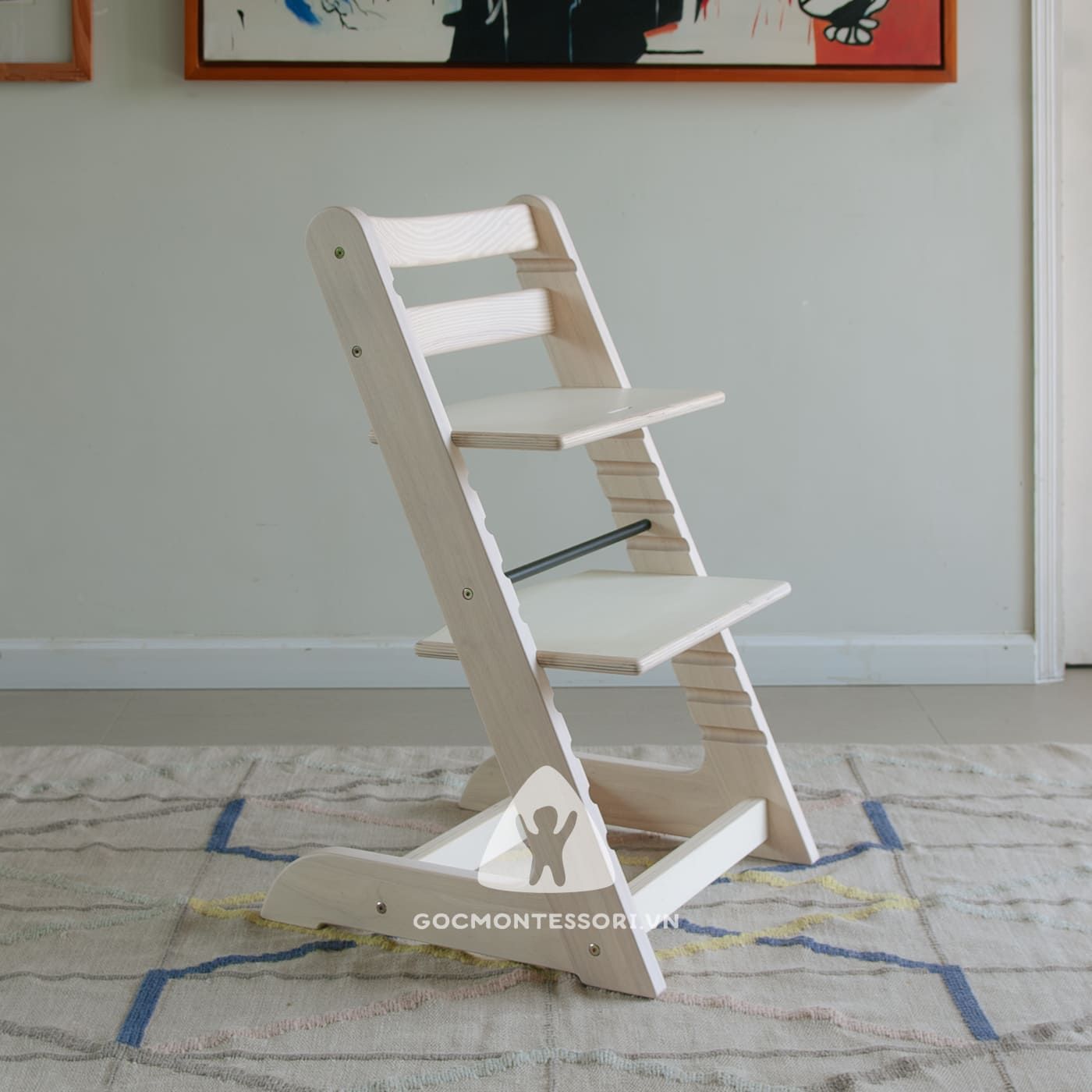Understanding the Learning Curve of High Chairs: Learning Curve High Chair

High chairs are essential for feeding babies and toddlers, offering a safe and convenient way to keep them secure during mealtimes. However, as your little one grows, their ability to use a high chair also develops. Understanding the different stages of a baby’s development related to high chair use is crucial for both safety and mealtime success.
Stages of High Chair Development, Learning curve high chair
This section explores the different stages of a baby’s development related to high chair use. Each stage is characterized by specific milestones and associated challenges.
- Stage 1: Introduction (4-6 months): This stage is primarily about familiarizing your baby with the high chair. The focus is on safety and comfort. Start by placing your baby in the high chair for short periods, allowing them to adjust to the new environment. Ensure the high chair is properly secured and adjusted to your baby’s height. During this stage, you can also start introducing your baby to the high chair by placing toys or interesting objects within their reach.
- Stage 2: Starting Solids (6-9 months): This stage marks the beginning of your baby’s solid food journey. As your baby starts exploring new textures and flavors, you can introduce them to different foods in the high chair. Ensure the high chair has a tray that can be easily cleaned and is suitable for feeding. You can also use a bib to protect your baby’s clothes from spills. During this stage, your baby may start to show an interest in feeding themselves. Encourage this exploration by offering them soft, finger foods that they can easily grasp and bring to their mouths.
- Stage 3: Self-Feeding (9-12 months): As your baby’s motor skills develop, they will become more adept at feeding themselves. This stage is about encouraging self-feeding and fostering independence. You can offer your baby a variety of foods, including finger foods, soft-cooked vegetables, and mashed fruits. You can also introduce utensils, such as spoons and forks, to help them learn how to use them. During this stage, your baby may also start to experiment with different feeding techniques, such as throwing food or trying to feed themselves with their hands. Be patient and encouraging, and remember that every baby develops at their own pace.
- Stage 4: Transitioning (12-18 months): This stage marks a transition period where your baby may start to show less interest in the high chair. They may be more interested in exploring their surroundings and may want to join you at the table. You can continue to use the high chair for mealtimes, but you can also start introducing them to a booster seat or a regular chair with a booster cushion. This will help them feel more included and part of the family mealtime experience.
- Stage 5: Gradual Independence (18 months+): As your toddler grows, they will become more independent and may no longer need a high chair. They may be able to sit at the table with you and use regular utensils. However, you may still need to provide them with a booster seat or cushion to ensure they are sitting at a safe and comfortable height. During this stage, you can encourage your toddler to participate in mealtime routines, such as setting the table or helping to clean up.
Choosing the Right High Chair for Different Learning Stages

As your little one grows, their needs and abilities change. Choosing a high chair that can adapt to these evolving stages is essential. By considering your child’s development and the features of different high chair designs, you can find the perfect match for their current and future needs.
Understanding Different High Chair Designs
The design of a high chair plays a crucial role in its suitability for different developmental stages. There are several common high chair designs, each with unique advantages and disadvantages:
- Traditional High Chairs: These classic high chairs typically feature a sturdy frame, a tray, and a seat that can be adjusted to different heights. They are often made of wood or metal and can be very durable. Traditional high chairs are ideal for infants who need support and are not yet able to sit independently. They offer a secure and stable platform for feeding and play.
- Convertible High Chairs: These versatile high chairs can transform from a traditional high chair into a toddler chair or booster seat. They often have adjustable features like a reclining backrest and a footrest, making them suitable for infants and toddlers. Convertible high chairs are a great investment as they can grow with your child, offering long-term value.
- Compact High Chairs: Compact high chairs are designed to be space-saving and portable. They are often lightweight and fold down for easy storage. These high chairs are ideal for families who are short on space or who frequently travel. While they may not offer the same level of adjustability as traditional or convertible high chairs, they are a practical choice for many families.
- Booster Seats: Booster seats are designed for toddlers who are able to sit independently and need a little extra height to reach the table. They are typically lightweight and portable, making them easy to transport to restaurants or other locations. Booster seats are a good option for toddlers who are ready to transition from a high chair to a regular chair.
Maximizing Learning Through High Chair Use

The high chair, a staple in many households, can be more than just a feeding station. It offers a unique opportunity to engage your baby in a variety of activities that promote their cognitive, sensory, and motor development. By incorporating these activities into mealtime, you can create a fun and enriching experience for your little one.
Activities for Different Developmental Stages
The activities you choose should be tailored to your baby’s developmental stage. As they grow, their abilities and interests will change, and so should the activities you offer.
- Early Stages (4-6 Months): During this period, your baby is exploring the world through their senses. They are fascinated by textures, colors, and sounds.
- Sensory Exploration: Offer your baby a variety of textures to touch, such as soft silicone teethers, smooth wooden spoons, or textured silicone bowls.
- Visual Stimulation: Hang colorful toys or mobiles above the high chair to capture your baby’s attention. Choose toys with contrasting colors and patterns.
- Sound Exploration: Introduce rattles, shakers, or musical toys that make different sounds. Encourage your baby to reach for and interact with these toys.
- Middle Stages (7-12 Months): As your baby gets older, they become more interested in cause and effect. They are also developing their fine motor skills.
- Cause and Effect: Provide toys that require your baby to manipulate them to produce a sound or action, such as stacking cups, push-and-pull toys, or toys with buttons that make noise.
- Fine Motor Skills: Offer finger foods that require your baby to use their pincer grasp, such as soft fruits and vegetables cut into small pieces, or small crackers.
- Object Permanence: Play peek-a-boo with your baby, hiding and revealing your face or a toy. This helps them understand that objects still exist even when they can’t see them.
- Later Stages (12+ Months): By this age, your baby is becoming more independent and eager to explore. They are also developing their language skills.
- Language Development: Talk to your baby during mealtime, describing the food, colors, and textures. Sing songs and read books.
- Problem Solving: Offer your baby puzzles or simple games that require them to solve a problem, such as putting shapes into a box or matching pairs of objects.
- Social Interaction: Engage your baby in conversations and encourage them to interact with other family members.
Creating a Positive Mealtime Experience
Mealtime should be a positive and enjoyable experience for both you and your baby. Here are some tips for creating a welcoming and enriching environment:
“Make mealtime a fun and interactive experience for your baby. They will learn to associate eating with positive emotions and develop a healthy relationship with food.”
- Establish a Routine: Try to have mealtimes at the same time each day. This will help your baby anticipate and prepare for the meal.
- Create a Calm Atmosphere: Avoid distractions like TV or loud noises. Keep the atmosphere calm and relaxed.
- Positive Reinforcement: Praise your baby for trying new foods and for using their utensils properly.
- Let Your Baby Explore: Allow your baby to explore their food with their hands. This is a natural part of learning about different textures and flavors.
- Be Patient: It takes time for babies to learn how to eat independently. Be patient and understanding, and celebrate their progress along the way.